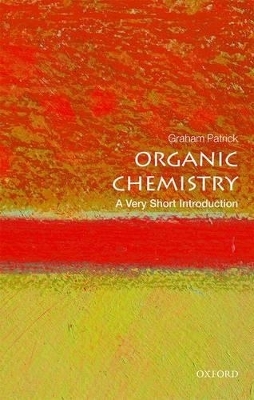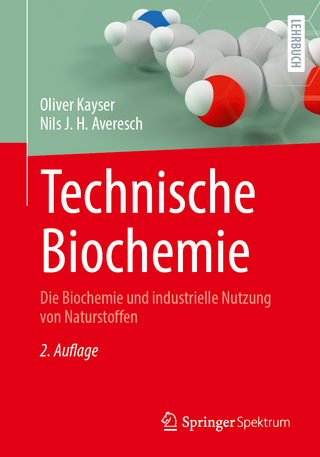
Organic Chemistry
A Very Short Introduction
Seiten
2017
Oxford University Press (Verlag)
978-0-19-875977-5 (ISBN)
Oxford University Press (Verlag)
978-0-19-875977-5 (ISBN)
Organic chemistry concerns the properties and synthesis of carbon-based molecules. Carbon atoms can concatenate into long chains and cyclic compounds, bonding with a variety of other elements, so the possible structures are almost limitless. Graham Patrick explores the world of organic chemistry and its wide applications.
Organic chemistry is the chemistry of compounds of carbon. The ability of carbon to link together to form long chain molecules and ring compounds as well as bonding with many other elements has led to a vast array of organic compounds. These compounds are central to life, forming the basis for organic molecules such as nucleic acids, proteins, carbohydrates, and lipids.
In this Very Short Introduction Graham Patrick covers the whole range of organic compounds and their roles. Beginning with the structures and properties of the basic groups of organic compounds, he goes on to consider organic compounds in the areas of pharmaceuticals, polymers, food and drink, petrochemicals, and nanotechnology. He looks at how new materials, in particular the single layer form of carbon called graphene, are opening up exciting new possibilities for applications, and discusses the particular challenges of working with carbon compounds, many of which are colourless. Patrick also discusses techniques used in the field.
ABOUT THE SERIES: The Very Short Introductions series from Oxford University Press contains hundreds of titles in almost every subject area. These pocket-sized books are the perfect way to get ahead in a new subject quickly. Our expert authors combine facts, analysis, perspective, new ideas, and enthusiasm to make interesting and challenging topics highly readable.
Organic chemistry is the chemistry of compounds of carbon. The ability of carbon to link together to form long chain molecules and ring compounds as well as bonding with many other elements has led to a vast array of organic compounds. These compounds are central to life, forming the basis for organic molecules such as nucleic acids, proteins, carbohydrates, and lipids.
In this Very Short Introduction Graham Patrick covers the whole range of organic compounds and their roles. Beginning with the structures and properties of the basic groups of organic compounds, he goes on to consider organic compounds in the areas of pharmaceuticals, polymers, food and drink, petrochemicals, and nanotechnology. He looks at how new materials, in particular the single layer form of carbon called graphene, are opening up exciting new possibilities for applications, and discusses the particular challenges of working with carbon compounds, many of which are colourless. Patrick also discusses techniques used in the field.
ABOUT THE SERIES: The Very Short Introductions series from Oxford University Press contains hundreds of titles in almost every subject area. These pocket-sized books are the perfect way to get ahead in a new subject quickly. Our expert authors combine facts, analysis, perspective, new ideas, and enthusiasm to make interesting and challenging topics highly readable.
Graham Patrick is a lecturer in Organic Chemistry and Medicinal Chemistry at the University of the West of Scotland. He is the author of An Introduction to Medicinal Chemistry (OUP, 1995), now in its 5th edition, and An Introduction to Drug Synthesis (OUP, 2015).
REFERENCES; FURTHER READING; INDEX
| Erscheinungsdatum | 28.02.2017 |
|---|---|
| Reihe/Serie | Very Short Introductions |
| Zusatzinfo | 88 black and white images |
| Verlagsort | Oxford |
| Sprache | englisch |
| Maße | 111 x 174 mm |
| Gewicht | 152 g |
| Themenwelt | Naturwissenschaften ► Biologie ► Biochemie |
| Naturwissenschaften ► Chemie ► Organische Chemie | |
| Naturwissenschaften ► Chemie ► Technische Chemie | |
| Technik | |
| ISBN-10 | 0-19-875977-0 / 0198759770 |
| ISBN-13 | 978-0-19-875977-5 / 9780198759775 |
| Zustand | Neuware |
| Informationen gemäß Produktsicherheitsverordnung (GPSR) | |
| Haben Sie eine Frage zum Produkt? |
Mehr entdecken
aus dem Bereich
aus dem Bereich
Die Biochemie und industrielle Nutzung von Naturstoffen
Buch | Softcover (2024)
Springer Spektrum (Verlag)
CHF 69,95


